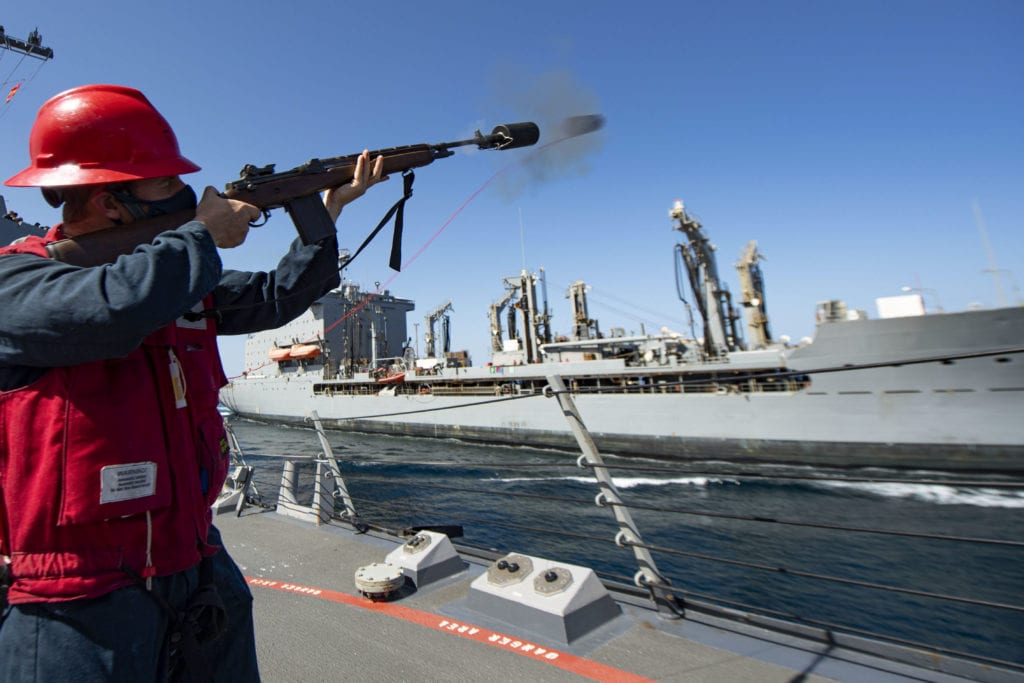
ARLINGTON, Va. — Supporting United States forces in the vast and likely contested areas of great power competition will be an enormous challenge, but a top Defense Department planner says using logistics “as a warfighting function” could throw adversaries off balance.
Logistics isn’t just about planes, ships and trucks carrying stuff, Marine Corps Maj. Gen. David Maxwell, the Pentagon’s vice director for logistics (J4) told a virtual defense industry conference Feb. 3. “In fact, I would offer that we really need to be thinking about employing logistics as a warfighting function,” he said.
“The military challenge for logistics,” Maxwell told the Defense Industrial Association’s Expeditionary Warfare Conference, “is that under all domain persistent attack, we have to be able to rapidly aggregate and deploy forces worldwide and support those forces potentially over vast distances, through contested domains and most likely over a protracted time frame.”
That’s going to be a tall order, compared to the decades after the Cold War, when the maritime environment was largely uncontested.
“Logistics support, something we’ve taken for granted for quite a while, is no longer a given,” Maxwell said, adding that in a contested environment the integration of logistics, operations and command and control is more critical than ever, but “our ways of doing it are no longer adequate.”
U.S. strategy calls for a geographically distributed force across the Pacific to confound and deter adversaries armed with increasingly formidable air and sea denial capabilities. In addition to reducing the signatures of supply vessels, greater use of autonomous vehicles, artificial intelligence, machine learning and better training the troops who will use those digital tools, Maxwell said logistics, itself, should be added to the commander’s toolbox.
He suggested logistics could be used as a reconnaissance or counter reconnaissance tool “to probe and identify” competitors’ surface areas. “Would a commander intentionally use logistics movement as a signaling activity to assess adversary reactions as either a deterrent or an indication of escalation?” he asked. He also suggested a commander could conceal logistics activities “in order to deceive the adversary and retain an element of surprise.”
Those actions “have the potential to either deter or deny adversary objectives if we employ them intentionally,” Maxwell said.
- Shall We Play a Game? Winning Isn’t the Point, Experts Say - April 5, 2023
- U.S. Goal: Maintaining Extended Presence in Arctic’s Harsh Environment - April 4, 2023
- Joint, Combined Exercise Shows Marine Littoral Regiment Idea is on ”Right Track’ - February 24, 2023






